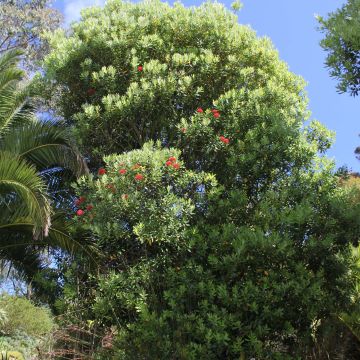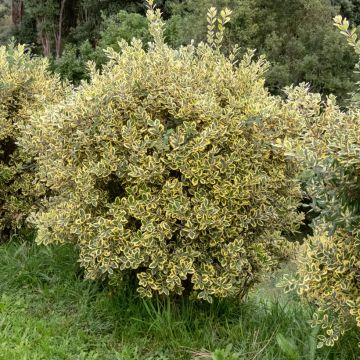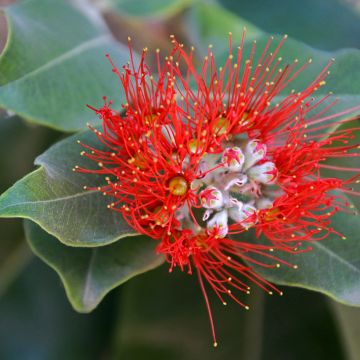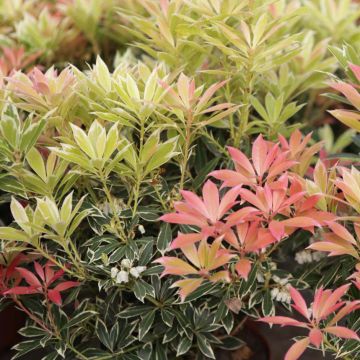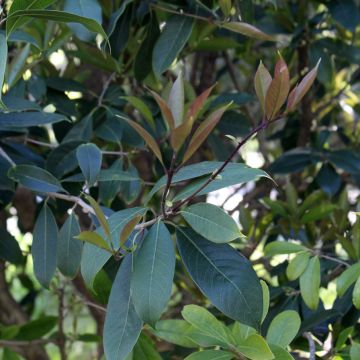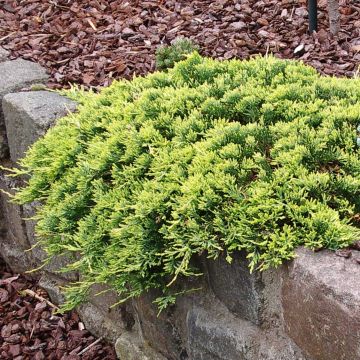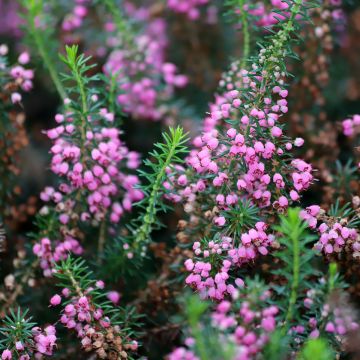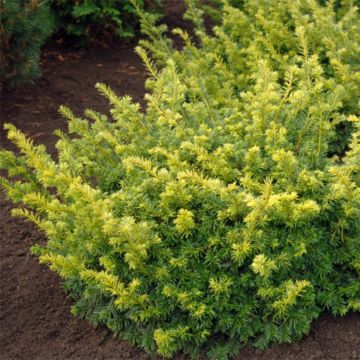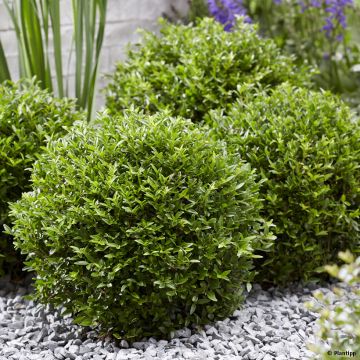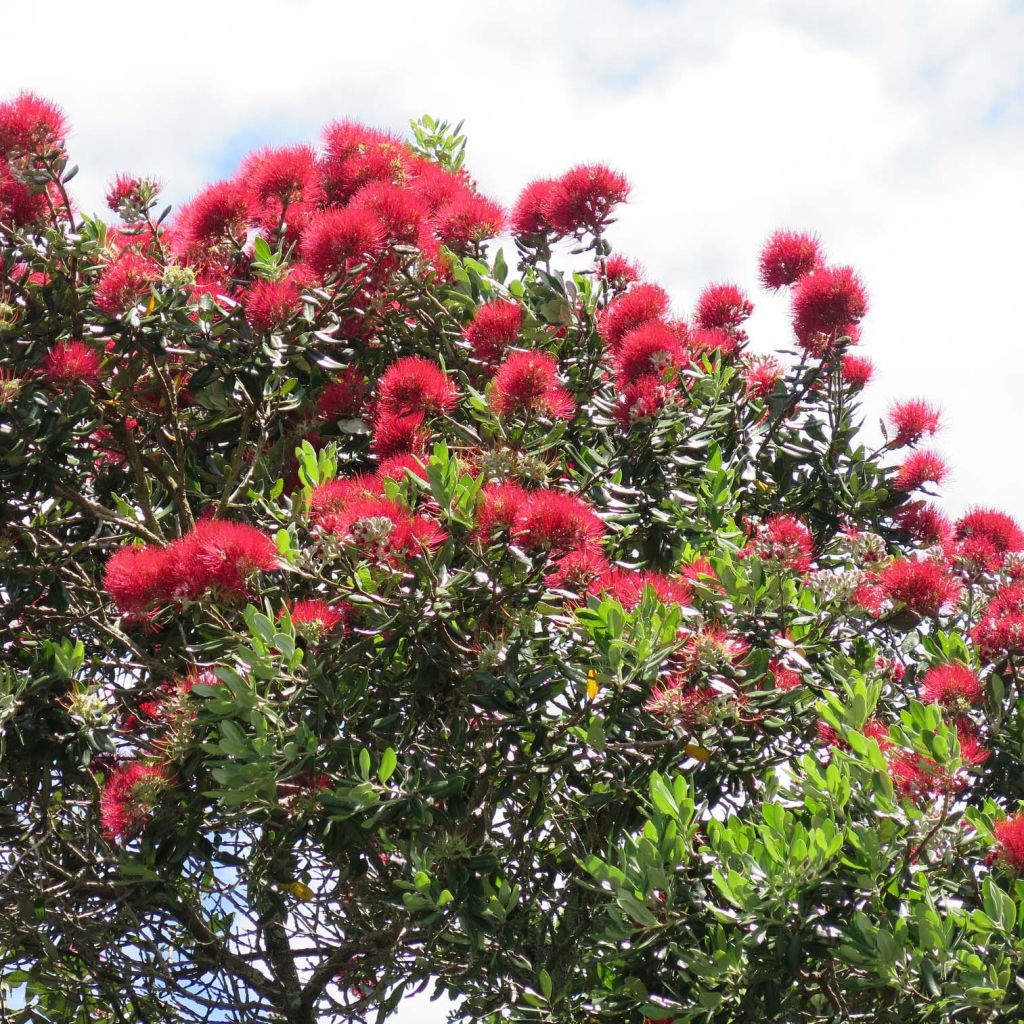

Metrosideros excelsa
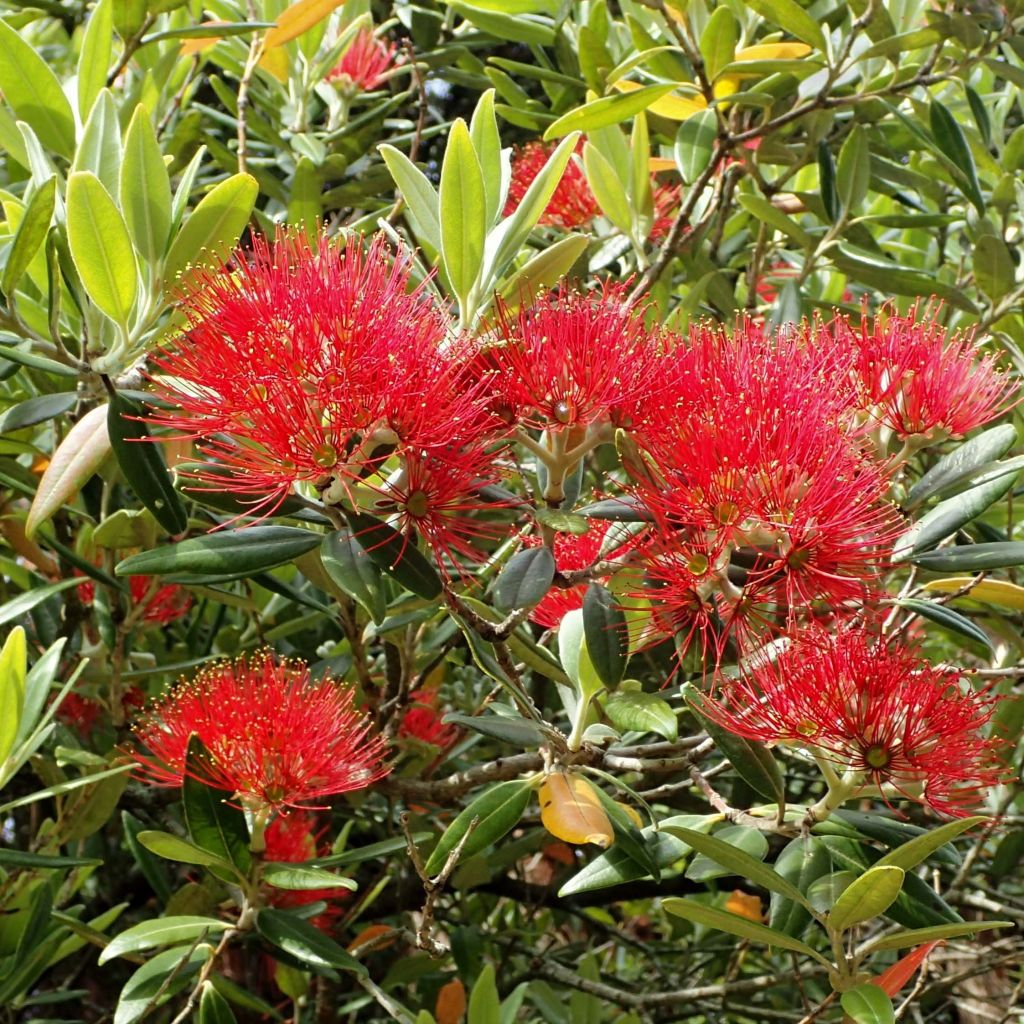

Metrosideros excelsa
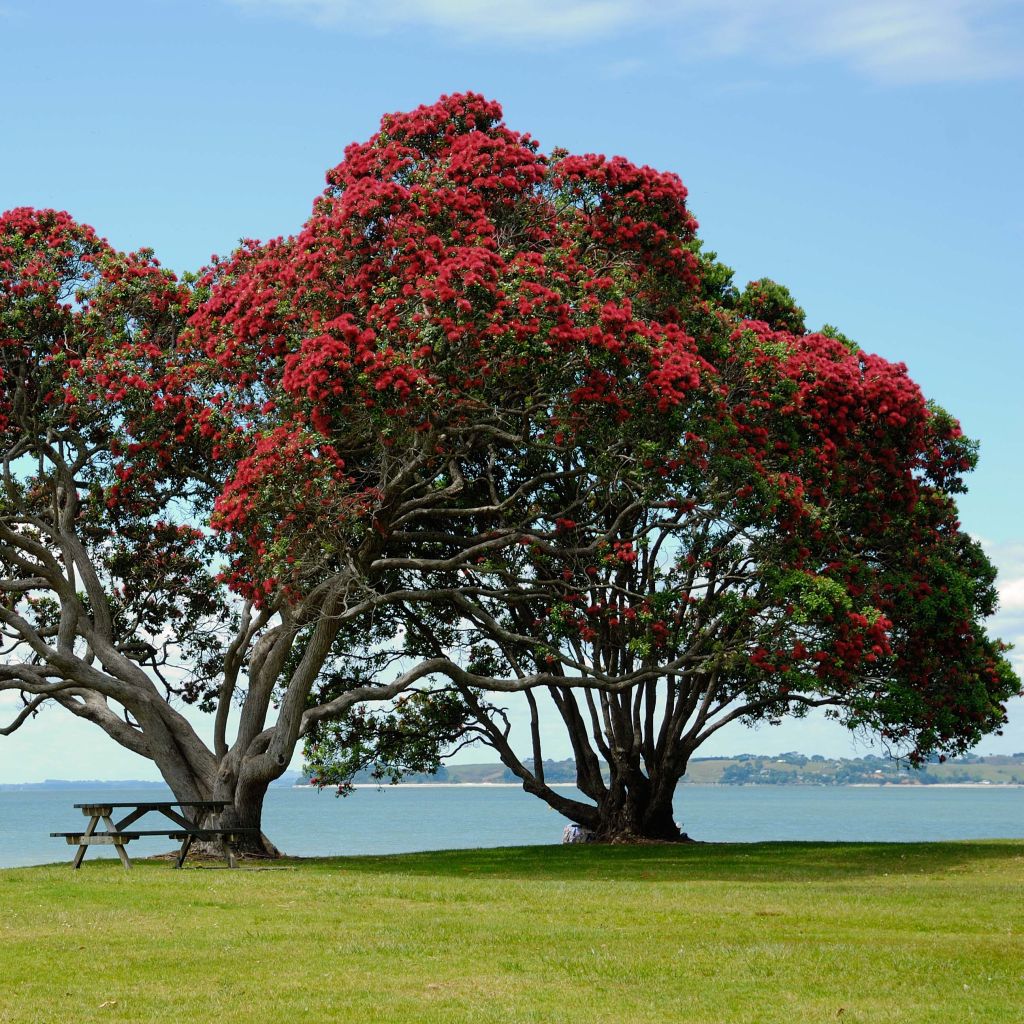

Metrosideros excelsa
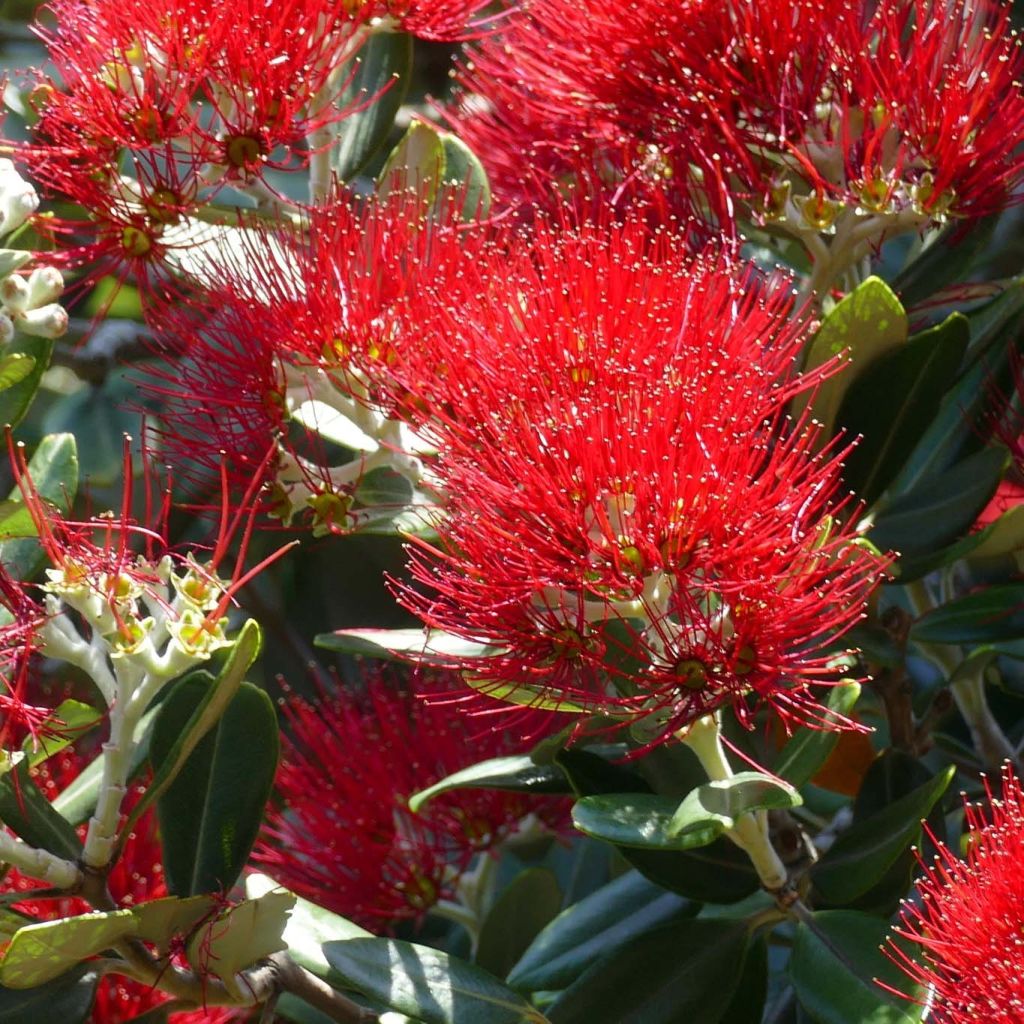

Metrosideros excelsa
Metrosideros excelsa
Metrosideros excelsa
Pohutukawa
This item cannot be shipped to the selected country
Delivery charge from €5.90
Delivery charge from €5.90
Delivery charge from €5.90
Delivery to Corse prohibited
More information
Schedule delivery date,
and select date in basket
This plant carries a 24 months recovery warranty
More information
We guarantee the quality of our plants for a full growing cycle, and will replace at our expense any plant that fails to recover under normal climatic and planting conditions.
From €5.90 for pickup delivery and €6.90 for home delivery
Express home delivery from €8.90.
From €5.90 for pickup delivery and €6.90 for home delivery
Express home delivery from €8.90.
From €5.90 for pickup delivery and €6.90 for home delivery
Express home delivery from €8.90.
Delivery to Corse prohibited: UE law prohibits the import of this plant from mainland France to Corse as part of the fight against Xylella fastidiosa. Please accept our sincere apologies.
More information
Does this plant fit my garden?
Set up your Plantfit profile →
Description
Metrosideros excelsa is a tall tree that grows on the volcanic coasts of New Zealand where it is called pohutukawa, which can be translated as "splashed by the sea". It is appreciated for its brilliant flowering, with large clusters of scarlet stamens, which are highlighted by its tough foliage of a beautiful grey-green colour. Metrosideros makes a magnificent subject to be planted in a large pot on a terrace or even indoors in cold climates. It will remain relatively small, reaching a height of no more than 2 m (6 ft 7 in) and a width of 1 m (3 ft 4 in).
Metrosideros excelsa (synonym Metrosideros tomentosus) belongs to the Myrtaceae family, along with myrtles, eucalyptus, and callistemons. The genus name, Metrosideros, comes from the Greek "metra" (meaning "the heart of a tree") and "sideros" ("iron"), alluding to the hardness of the wood of these bushes. Its vernacular name of New Zealand Christmas Tree originates from its flowering period, which occurs around Christmas time in its country of origin. There, this tall and beautiful tree with an umbrella-like habit can reach heights of up to 20 m (65 ft 7 in). It is a plant that prefers acidic to neutral soil and dislikes the presence of limestone.
Its vegetation is naturally dense and its growth is slow. Its bark, rather corky, is grey-brown in colour. Over the years, aerial roots may appear at the base of the very sturdy trunk as well as along its length and on the knotty branches. This characteristic is evidence of an adaptation to an epiphytic lifestyle, with Metrosideros sometimes growing in nature much like ivy, clinging to other trees to reach the light. The branches bear entire, ovate, tough, slightly undulate leaves that are dark green in colour, almost white and downy on the underside. They measure 8-10 cm (3.1-3.9 in) long and 2-3 cm (0.8-1.2 in) wide. Flowering occurs from May to July, and its timing may vary depending on the climate. At the tips of the branches, clusters of beautiful flowers appear, composed of numerous 3 cm (1.2 in) long red, very conspicuous stamens, forming large scarlet pompons. They are very nectar-rich and attract certain birds and numerous pollinating insects. The seeds take a year to mature. The root system of this plant is well developed, and over time some aerial roots may sink into the ground, forming a small tree with multiple trunks.
This Metrosideros is a magnificent bush, to be grown as a conservatory plant, where it will live for many years. In a greenhouse or conservatory, it will create an extremely decorative quartet with an orange tree, a Tibouchina, or a mimosa, evoking landscapes with exotic charms and scents. To complete an exotic decor, also consider palm trees, Banksia integrifolia, and callistemons. It is not afraid of strong winds or salt, and tolerates drought well.
Report an error about the product description
Metrosideros excelsa in pictures
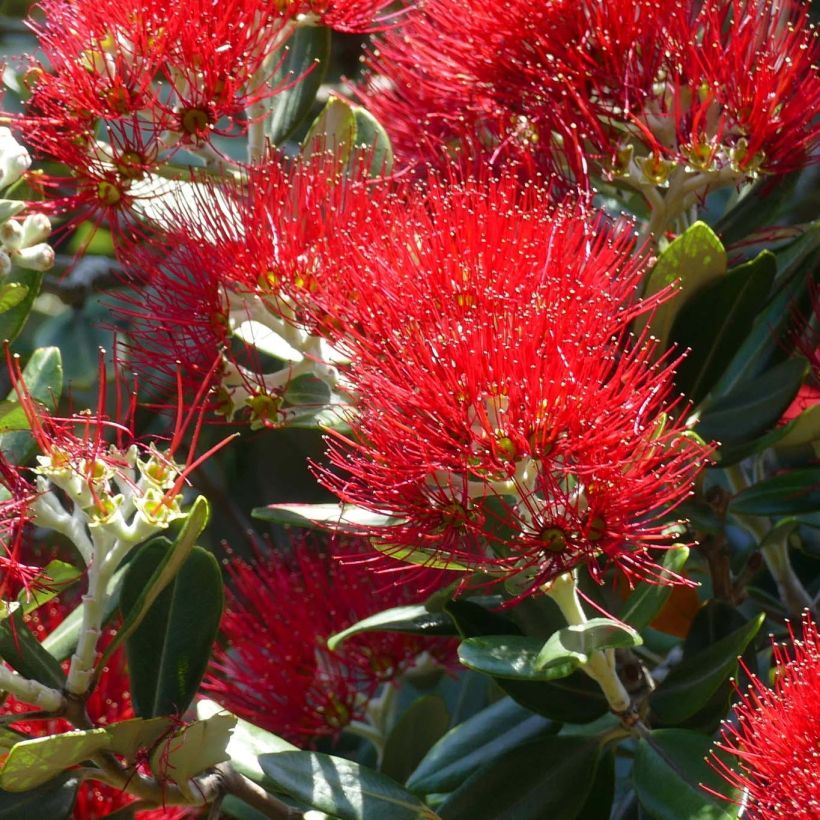

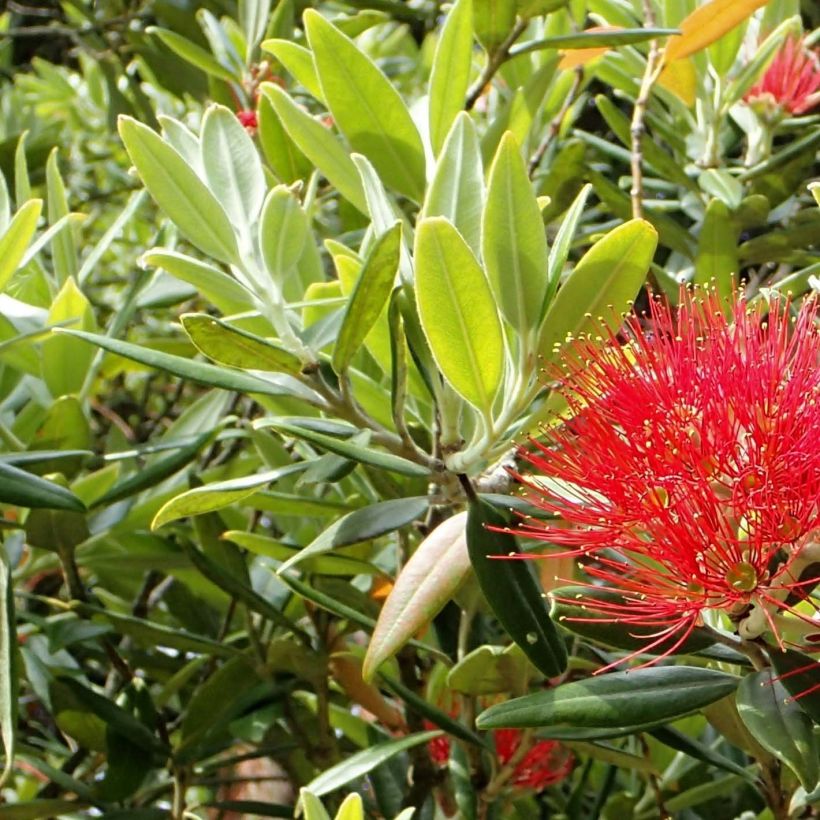

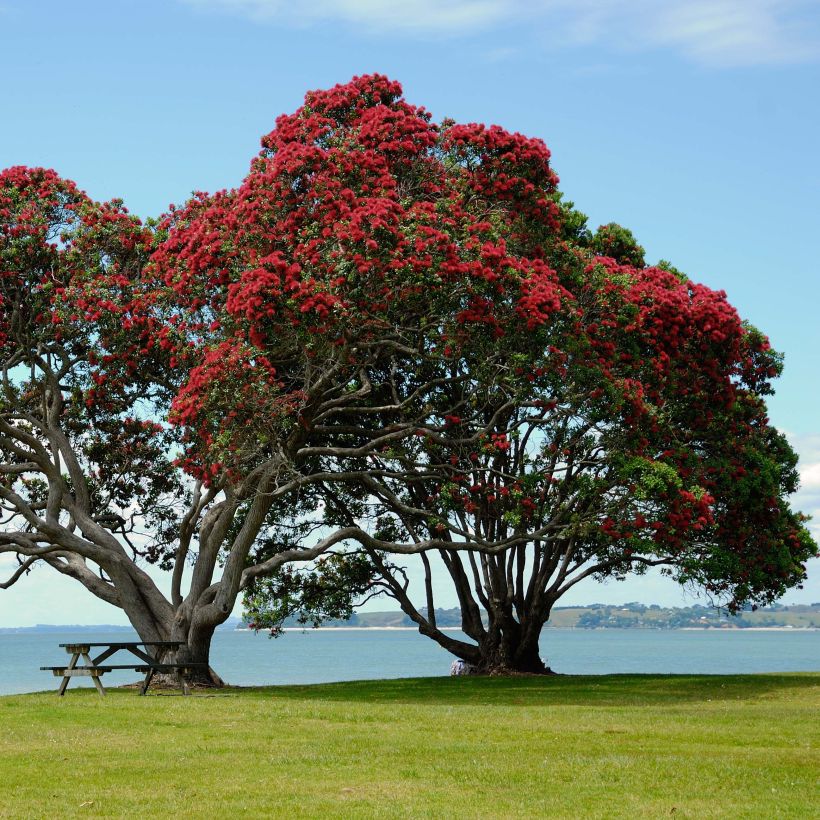

Plant habit
Flowering
Foliage
Botanical data
Metrosideros
excelsa
Myrtaceae
Pohutukawa
Oceania
Other Metrosideros
Planting and care
Metrosideros excelsa will thrive in light soil that is preferably slightly acidic and not too poor; humiferous, well-drained, rather dry in winter, and slightly moist in summer especially if grown in a pot. However, this is a relatively accommodating bush in terms of soil: it tolerates a little limestone and adapts quite well to summer drought once well rooted, after 3 years of cultivation in the open ground. Soil drainage is very important to promote better resistance to cold. It withstands sea spray and wind very well. Plant it after the last frost. It will flourish in full sun or partial shade. It can withstand temperatures no lower than -3 °C (26.6 °F) for short periods, when it is fully grown. Young plants are less cold-resistant than their elders: cultivate them in pots until they reach a minimum height of 50 cm (19.7 in). Surround it with winter protection in winter and isolate it from the cold as much as possible. Install it in the warmest corner of the garden, in full sun against a south-facing wall. It will often be necessary to cultivate it in a large pot for winter storage, in a bright, airy, but unheated room. To shape it, you can prune the stems in autumn or after flowering to remove any interfering or unsightly branches and remove dead wood.
Cultivation in pots:
Provide good drainage in the bottom of the pot (layer of gravel or pottery shards), which should be large in volume. Use a light substrate, enriched with river sand, heath soil and leaf compost, and add a little slow-release fertiliser in spring. Water generously in summer with water that is not too calcareous if possible (ideally rainwater), allowing the soil to dry out a little between waterings. Mist the foliage in very hot weather. In winter, reduce watering. Repot once a year, in spring.
Planting period
Intended location
Care
-
, onOrder confirmed
Reply from on Promesse de fleurs
Evergreen shrubs
Haven't found what you were looking for?
Hardiness is the lowest winter temperature a plant can endure without suffering serious damage or even dying. However, hardiness is affected by location (a sheltered area, such as a patio), protection (winter cover) and soil type (hardiness is improved by well-drained soil).

Photo Sharing Terms & Conditions
In order to encourage gardeners to interact and share their experiences, Promesse de fleurs offers various media enabling content to be uploaded onto its Site - in particular via the ‘Photo sharing’ module.
The User agrees to refrain from:
- Posting any content that is illegal, prejudicial, insulting, racist, inciteful to hatred, revisionist, contrary to public decency, that infringes on privacy or on the privacy rights of third parties, in particular the publicity rights of persons and goods, intellectual property rights, or the right to privacy.
- Submitting content on behalf of a third party;
- Impersonate the identity of a third party and/or publish any personal information about a third party;
In general, the User undertakes to refrain from any unethical behaviour.
All Content (in particular text, comments, files, images, photos, videos, creative works, etc.), which may be subject to property or intellectual property rights, image or other private rights, shall remain the property of the User, subject to the limited rights granted by the terms of the licence granted by Promesse de fleurs as stated below. Users are at liberty to publish or not to publish such Content on the Site, notably via the ‘Photo Sharing’ facility, and accept that this Content shall be made public and freely accessible, notably on the Internet.
Users further acknowledge, undertake to have ,and guarantee that they hold all necessary rights and permissions to publish such material on the Site, in particular with regard to the legislation in force pertaining to any privacy, property, intellectual property, image, or contractual rights, or rights of any other nature. By publishing such Content on the Site, Users acknowledge accepting full liability as publishers of the Content within the meaning of the law, and grant Promesse de fleurs, free of charge, an inclusive, worldwide licence for the said Content for the entire duration of its publication, including all reproduction, representation, up/downloading, displaying, performing, transmission, and storage rights.
Users also grant permission for their name to be linked to the Content and accept that this link may not always be made available.
By engaging in posting material, Users consent to their Content becoming automatically accessible on the Internet, in particular on other sites and/or blogs and/or web pages of the Promesse de fleurs site, including in particular social pages and the Promesse de fleurs catalogue.
Users may secure the removal of entrusted content free of charge by issuing a simple request via our contact form.
The flowering period indicated on our website applies to countries and regions located in USDA zone 8 (France, the United Kingdom, Ireland, the Netherlands, etc.)
It will vary according to where you live:
- In zones 9 to 10 (Italy, Spain, Greece, etc.), flowering will occur about 2 to 4 weeks earlier.
- In zones 6 to 7 (Germany, Poland, Slovenia, and lower mountainous regions), flowering will be delayed by 2 to 3 weeks.
- In zone 5 (Central Europe, Scandinavia), blooming will be delayed by 3 to 5 weeks.
In temperate climates, pruning of spring-flowering shrubs (forsythia, spireas, etc.) should be done just after flowering.
Pruning of summer-flowering shrubs (Indian Lilac, Perovskia, etc.) can be done in winter or spring.
In cold regions as well as with frost-sensitive plants, avoid pruning too early when severe frosts may still occur.
The planting period indicated on our website applies to countries and regions located in USDA zone 8 (France, United Kingdom, Ireland, Netherlands).
It will vary according to where you live:
- In Mediterranean zones (Marseille, Madrid, Milan, etc.), autumn and winter are the best planting periods.
- In continental zones (Strasbourg, Munich, Vienna, etc.), delay planting by 2 to 3 weeks in spring and bring it forward by 2 to 4 weeks in autumn.
- In mountainous regions (the Alps, Pyrenees, Carpathians, etc.), it is best to plant in late spring (May-June) or late summer (August-September).
The harvesting period indicated on our website applies to countries and regions in USDA zone 8 (France, England, Ireland, the Netherlands).
In colder areas (Scandinavia, Poland, Austria...) fruit and vegetable harvests are likely to be delayed by 3-4 weeks.
In warmer areas (Italy, Spain, Greece, etc.), harvesting will probably take place earlier, depending on weather conditions.
The sowing periods indicated on our website apply to countries and regions within USDA Zone 8 (France, UK, Ireland, Netherlands).
In colder areas (Scandinavia, Poland, Austria...), delay any outdoor sowing by 3-4 weeks, or sow under glass.
In warmer climes (Italy, Spain, Greece, etc.), bring outdoor sowing forward by a few weeks.

































